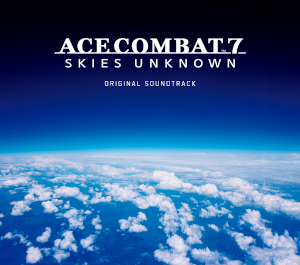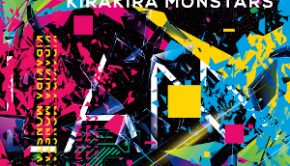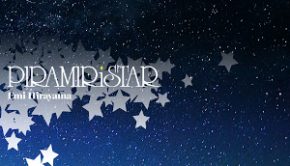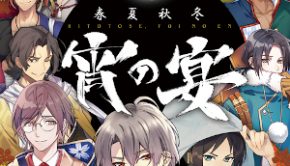ACE COMBAT 7: SKIES UNKNOWN ORIGINAL SOUNDTRACK
 |
Album Title: ACE COMBAT 7: SKIES UNKNOWN ORIGINAL SOUNDTRACK |
| Record Label: Sweep Record |
|
| Catalog No.: SRIN-1162 |
|
| Release Date: December 30, 2019 |
|
| Purchase: Buy at Sweep Record |
Overview
Ace Combat 7: Skies Unknown is the first mainline title in the series since 2007. Featuring compositions by Keiki Kobayashi, series veteran, as well as contributions from members of the BNSI sound team, such as Ryo Watanabe, who served as sound director, Hiroshi Okubo, Tetsukazu Nakanishi, it continues the tradition of strong soundtracks for this air combat simulator series. In addition to the game’s original soundtrack at release, it also includes the music for the DLC released for the game as well. How does this entry compare to others in the series?
Body
The album opens up with “Skies Unknown,” an atmospheric track by Ryo Watanabe that doesn’t really stand out, nor serve as the main theme to the soundtrack, but does manage to give a sense of a calm before the storm. Following that is “Main Menu,” another soft ambient electronic track that fits nicely as a menu screen. As it progresses, additional elements, like a more noticeable bass line is added, but it serves as another breather before the action. In fact, there are many such tracks that serve as a setup and closure to the various in-game missions. “IUN Briefing” and “IUN Debriefing” are such examples, with the former being an electronic heavy tune with a great sense of tension while the latter is done in a similar style, but with an air of victory in its execution. Other briefing and debriefing tunes also showcase different ranges of style to accomplish similar things. “444th Air Base Briefing” is mostly percussion with no real melody that helps create a tense atmosphere while its counterpart debriefing theme offers a sense of relief with its bright synths, piano, and electric guitar. The various “LRSSG Briefing” tunes, of which there are four total, range from dramatic and determined to heroic and angelic while the two “LRSSG Debriefing” themes use synthesizer and electronics to offer a sense of relief for the first one and a more mysterious and tense tune with strings and brass that gives off the impression that that there is still harder battles ahead.
Paramount, however, to the soundtrack is Keiki Kobayashi’s main theme. While it doesn’t have a standalone entry on the soundtrack, like previous soundtrack releases in the series, it permeates through much of the mission music. The first instance of this is presented in “Charge Assault,” the first mission in the game. Opening with tense electronic percussion and heavy brass hits, it transitions beautifullyi into the main theme, a heroic and determined melody with a strings focus and features great brass harmonies and percussion usage. “Dual Wielder” utilizes the same melody but is a bit groovier in tone thanks to the bass line and twangy guitars, while retaining an extremely exhilarating atmosphere. A personal favorite, “Faceless Soldier,” incorporates it alongside a tribal-like chanting. It’s an exquisite mix of electronic music, orchestra, choir, and voice that fit together so organically. “Siren’s Song” is another vocal led track, a bit more angelic in nature in the beginning before moving towards a drum n’ bass style accompaniment with acoustic guitar. It’s another excellent rendition of the main theme. “Battle for Farbanti’s” usage is more uplifting and the pulsing beat and brass gives off an heroic sound that compliments the strings and complements the more tense moments of the piece. “Daredevil” is perhaps the most popular iteration of the main theme in the game. Full of tension, dramatic passages mixed with those more hopeful in sound, all lend to a successful piece. Powerful vocals and choral backing also help add to the tension and hope heard within the piece and give it a lot of raw emotion. “Hush,” on the other hand, is a bit more delicate in sound, but still features powerful and emotional female-led vocals that incorporates the main theme motif as a piano melody. There is a sense of determination in this piece mixed with tension, uplifting hope, and heroism. The male choir towards the end also gives it a nice edge as well.
A shared motif can be heard in various other themes as well. “Eastern Wind” is the first appearance, offering a bit more of a somber feeling in its use of strings and electronic music to deliver the melody and a sense of tension. “Unmanned Craft” also utilizes this motif in a dark, oppressive atmosphere while “Gunther Peninsula” offers tension with its strings, brass, and distorted electronica while also featuring the main theme. “ADFX-10” is a powerful boss theme. It opens with angelic vocals before transitioning into distorted electronica, militaristic percussion and brass, the latter of which is particularly dramatic. It’s an exquisite tune. “Sol Squad” opens with deep male choral samples and conveys a religious tone before bringing in acoustic guitar and electronic beats, making for a fun and enthralling tune that uses the same motif as “Sol Squad.” The opening to “Archange” is exactly that of “Sol Squad,” although more choral forward. Big electronic hits, percussion, and brass help accentuate the powerful use of choir and make for an excellent boss theme.
Of course, there are a lot of themes present on the soundtrack that were done by members of the Bandai Namco sound team. “Tail Man” gives off a huge sense of flight and a strong sense of tension. It isn’t the most interesting tune melodically speaking, at least during the first half where intense percussion is the focus, but the latter half’s melody with strings and choirs is quite dramatic and intense. “Werewolf” is a very percussive and electronic tune that gives off a great sense of tension with its brooding strings and brass melody. “Waiapolo Mountains” is one of the slower tunes on the album and features cinematic brass alongside droning electronic music. It, too, is quite tense and dramatic, with the strings carrying a lot of this aspect of the piece. The brass melody is quite beautiful and the overall tune’s progression keeps it interesting. “Lost Kingdom” is another interesting tune. It has a mysterious air to it, featuring piano, delicate strings, and synthesizer alongside militaristic percussion and its slow build into something more powerful is simply stunning. “Magic Spear I” and “Magic Spear II” are two sides of the same coin. The former features a funky electric guitar melody with a great energy and a great melody with plenty of brass hits, drum pads, and strings accompaniment while the latter peels away some of the electric guitar focus to be a bit more cinematic and orchestral, with a more serious tone. The electric guitar is still used as a solo element in this version though. Another two part piece is “Last Hope I” and “Last Hope II.” The former is dramatic and tense, with droning electronic elements, great percussion elements, and a slightly exotic, Eastern sound to its delicate melody. The latter is similar, but is more tense and has a stronger focus on electronic elements.
The soundtrack release also features music from the various DLC packs released after the game initially released. “Enchanter I” and “Enchanter II” are an excellent start to the DLC campaign. The former is quite heroic, with a great brass melody supported by martial percussion and tense and stunning strings work. The former amps up the energy with even more frenetic strings and is generally more intense. “Sighthound” continues with the frenetic strings while adding pulsing electronic beats, tense and ominous brass melody that ends in a somber choral section. “Anchorhead Raid” opens with somber strings, a slower tempo, and some electronic tones before progressing to a more determined sound with an exhilarating melody. “Mimic,” on the other hand, eschews the orchestra and is a prog rock ride from start to finish with plenty of keyboard use, slap bass, and a chaotic and frenetic use of guitar. The last set of DLC is done by Keiki Kobayashi and each tune shares a similar choral melody. “Awakening” is slower tempo with strings, drums, and bass guitar with the overall effect being beautiful and dramatic. “Alicorn” is a bit more tense and dramatic, adding more instrumental elements. Lastly, “Hero of Comberth Harbor” is the most dramatic version with an intense piano opening with equally intesnse strings. The end result is extremely powerful. There are also a handful of previous Ace Combat tunes towards the end of the soundtrack that give the overall package a bit more diversity.
Summary
The end result of Ace Combat 7: Skies Unknown is an extremely powerful one. Throughout the soundtrack, whether by Keiki Kobayashi himself or through members of the Bandai Namco sound team, exhilaration, tension, and hope are at the key to the missions. The prolific use of the main theme elevates the soundtrack and continues to establish Keiki Kobayashi as the heart of the series’ soundtrack. Fans of previous Ace Combat soundtracks will certainly enjoy the contributions held within and those who may be unfamiliar will probably fall in love with the series as well. This is an extremely strong effort by all involved and well worth the purchase.
Do you agree with the review and score? Let us know in the comments below!
5
Posted on May 12, 2020 by Don Kotowski. Last modified on May 12, 2020.















A really great review